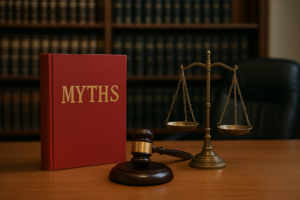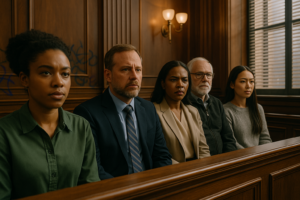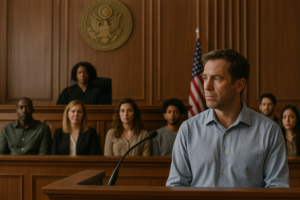Protecting Your Business Against Premises Liability Claims
Businesses across America face potential financial claims from premises liability lawsuits on a daily basis. These increasingly common legal challenges can drain your company’s resources, devastate your hard-earned reputation, and in extreme cases, force your business to close permanently.
Find Out If You Have a Case!
What Is Premises Liability?
Premises liability holds property owners and occupants legally responsible for accidents and injuries occurring on their property. This legal principle requires business owners to maintain reasonably safe conditions for all visitors and provide adequate warnings about potential hazards that might exist on the premises.
Understanding Key Legal Elements
Duty of Care
Business owners must maintain different levels of care depending on the visitor’s status as an invitee, licensee, or trespasser. Commercial establishments owe the highest duty of care to customers and other business invitees who enter the premises for mutual benefit.
Breach of Duty
A breach occurs when a business fails to meet its obligation to maintain safe conditions or warn of known hazards. This failure to exercise reasonable care forms the foundation of most premises liability claims against businesses.
Causation
For a valid claim, the plaintiff must establish that the business’s breach of duty directly caused their injury. The connection between negligence and injury must be clear and demonstrable for a successful premises liability case.
Damages
The injured party must prove they suffered actual damages such as medical expenses, lost wages, pain and suffering, or other compensable losses. These quantifiable damages represent the financial recovery sought in premises liability claims.
Common Hazards That Trigger Costly Claims
Slip and Fall Incidents
Wet floors, uneven surfaces, and inadequate warning signs create dangerous conditions that frequently lead to serious injuries. These preventable accidents represent the most common type of premises liability claim against businesses.
Inadequate Security Measures
Businesses may be held liable for criminal acts that occur on their property if they failed to implement reasonable security measures. Proper lighting, surveillance systems, and security personnel are essential in areas with foreseeable risks.
Poor Maintenance Practices
Broken handrails, damaged flooring, faulty equipment, and structural defects create unnecessary risks for visitors to your property. Regular inspection and prompt repair of these hazards significantly reduce your liability exposure.
Environmental Hazards
Snow accumulation, ice formation, and weather-related dangers present seasonal risks that demand immediate attention and mitigation. Businesses must establish clear protocols for addressing these temporary but dangerous conditions.
7 Essential Protective Strategies For Your Business
1. Implement Comprehensive Safety Inspection Systems
Establish a consistent schedule for thorough property inspections with detailed documentation of findings and corrective actions taken. These records serve as crucial evidence of your diligence in maintaining safe premises and strengthen your defense against liability claims.
2. Train Staff On Safety Protocols And Emergency Response
Educate all employees about hazard identification, proper reporting procedures, and immediate mitigation steps for dangerous conditions. Well-trained staff members become your frontline defense against accidents by addressing potential dangers before visitors encounter them.
3. Install Effective Warning Signage And Barriers
Post visible warning signs in areas with potential hazards such as wet floors, uneven surfaces, or ongoing maintenance work. Properly placed signage demonstrates your commitment to visitor safety and fulfills your legal obligation to warn of potential dangers.
4. Maintain Detailed Documentation Systems
Develop robust record-keeping procedures that track all maintenance, repairs, cleaning schedules, and incident reports implemented at your location. This documentation establishes your pattern of responsible property management and provides critical evidence if a claim arises.
5. Deploy Strategic Surveillance Systems
Install comprehensive video monitoring in high-traffic and high-risk areas throughout your property and parking areas. Video evidence can provide objective documentation of the actual circumstances surrounding an alleged incident and protect against fraudulent claims.
6. Secure Appropriate Liability Insurance Coverage
Obtain comprehensive commercial general liability insurance with adequate limits for your specific industry risk profile and exposure levels. A properly structured insurance policy provides critical financial protection against the potentially ruinous costs of litigation and settlements.
7. Establish Vendor Management Protocols
Create clear contractual requirements for service providers who perform maintenance, cleaning, or security functions on your property. Strong indemnification clauses and insurance requirements for vendors create additional layers of protection against liability claims.
Legal Defenses To Premises Liability Claims
Open and Obvious Doctrine
In many jurisdictions, businesses may have reduced liability for hazards that are clearly visible and apparent to a reasonable person. This defense acknowledges that visitors have responsibility to observe and avoid plainly visible dangers.
Comparative Negligence
Most states recognize that injured parties who contribute to their own injuries through carelessness should have reduced recovery or no recovery. Understanding your state’s specific comparative negligence laws provides important protection against unwarranted claims.
Proper Warning Defense
Businesses that provide adequate warnings about potential hazards may have reduced liability if someone ignores those warnings. Clear signage and barriers demonstrate your fulfillment of the duty to warn visitors about potential dangers.
Responding Effectively To An Incident
Document The Scene Thoroughly
Immediately secure photographs, witness statements, and detailed incident reports while conditions remain unchanged. This contemporaneous evidence often proves decisive in establishing the actual circumstances surrounding an alleged incident.
Provide Appropriate Assistance
Offer reasonable assistance to injured persons without making statements that could be construed as admissions of fault. Compassionate care demonstrates your concern while properly managing potential liability exposure.
Notify Insurance Carriers Promptly
Contact your insurance provider immediately to ensure compliance with policy reporting requirements and secure professional claim handling. Timely notification allows your insurer to conduct a proper investigation while the evidence remains fresh and accessible.
Consult Legal Counsel
Engage experienced premises liability defense counsel for guidance on evidence preservation and response strategy. Early legal intervention often prevents costly mistakes and strengthens your position against potential claims.
(FAQ) Frequently Asked Questions
What types of businesses face the highest premises liability risks?
Retail establishments, restaurants, hotels, and properties with high public traffic face elevated liability risks due to the volume of visitors. These businesses should implement particularly rigorous inspection schedules and maintenance protocols to address their increased exposure.
Can comparative negligence reduce my business's liability?
Yes, if the injured person’s own carelessness contributed to their accident, many states reduce or eliminate their recovery proportionate to their fault. For example, in modified comparative negligence states like Colorado, businesses may avoid liability if the injured party was 50% or more at fault.
Are premises liability waivers effective for reducing business risk?
Liability waivers can provide protection for known risks in voluntary or recreational contexts but generally cannot exempt businesses from liability for gross negligence. Properly drafted waivers tailored to your specific business activities provide an additional layer of protection.
How long do I have to address a hazardous condition on my property?
Property owners must address known hazards within a “reasonable” timeframe, which varies based on the severity of the danger and circumstances. Immediate action should be taken to warn visitors about the hazard until permanent repairs can be completed.
Does having insurance eliminate the need for other protective measures?
Insurance provides financial protection but does not replace the need for proactive safety measures to prevent accidents. The best protection combines comprehensive insurance coverage with rigorous safety protocols and hazard prevention strategies.
Where can I find official guidance on premises liability regulations?
Official guidance on premises liability standards can be found through the Occupational Safety and Health Administration (OSHA) at www.osha.gov, your state’s department of labor website, and the CDC’s Slip, Trip, and Fall Prevention Guide.
CONTACT rAMOS LAW
Don’t wait until a premises liability claim threatens your business’s financial stability and reputation. Implementing proactive protective measures significantly reduces your risk exposure while demonstrating your commitment to maintaining a safe environment for customers and visitors alike.

10 Myths About Filing a Lawsuit — Debunked
The Truth Behind Legal Claims That Every Accident Victim Should Know Think filing a lawsuit is only for greedy people or reserved for dramatic courtroom battles? Think again. Many people avoid filing valid claims because of common myths and misinformation circulating widely about the legal system. This misinformation can prevent

Class Action Lawsuits: Uniting Voices for Collective Justice
Empowering Individuals to Seek Justice Together When one person stands up, it’s powerful. When thousands do, it can change everything. This strength in numbers can force real accountability, especially when individual legal actions would be too small to pursue alone. Class action lawsuits are legal cases filed on behalf of

What Happens If My Personal Injury Case Goes to Trial
Table of Contents The Reality of Personal Injury Litigation Did you know that over 90% of personal injury cases settle out of court? But what happens when negotiations fail and your case goes to trial? Facing a trial can be daunting, and the uncertainty surrounding legal proceedings can heighten anxiety.